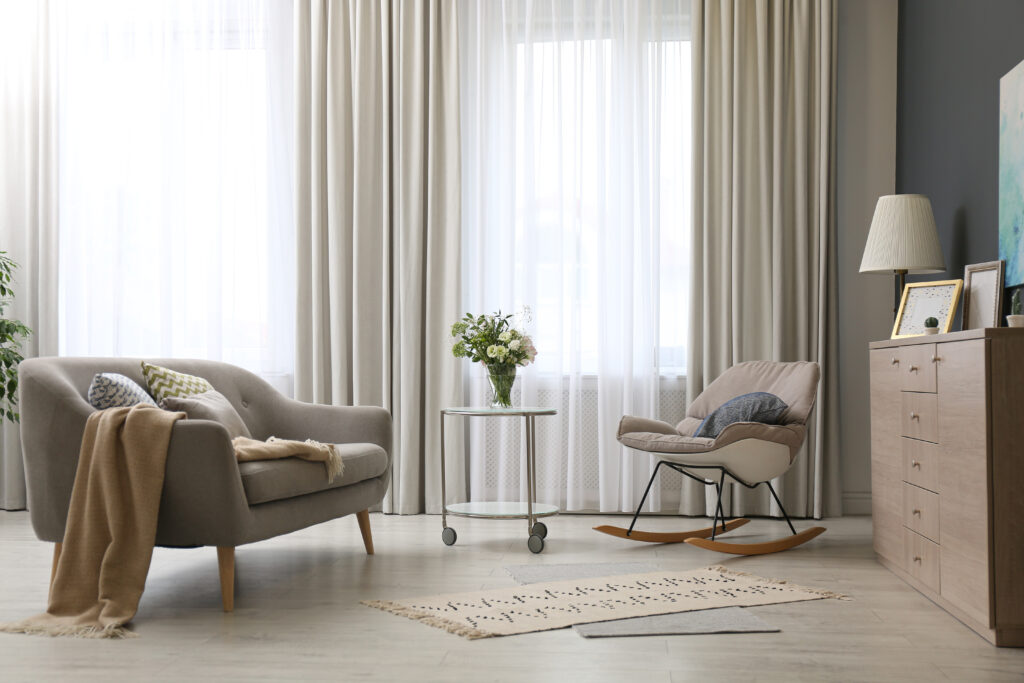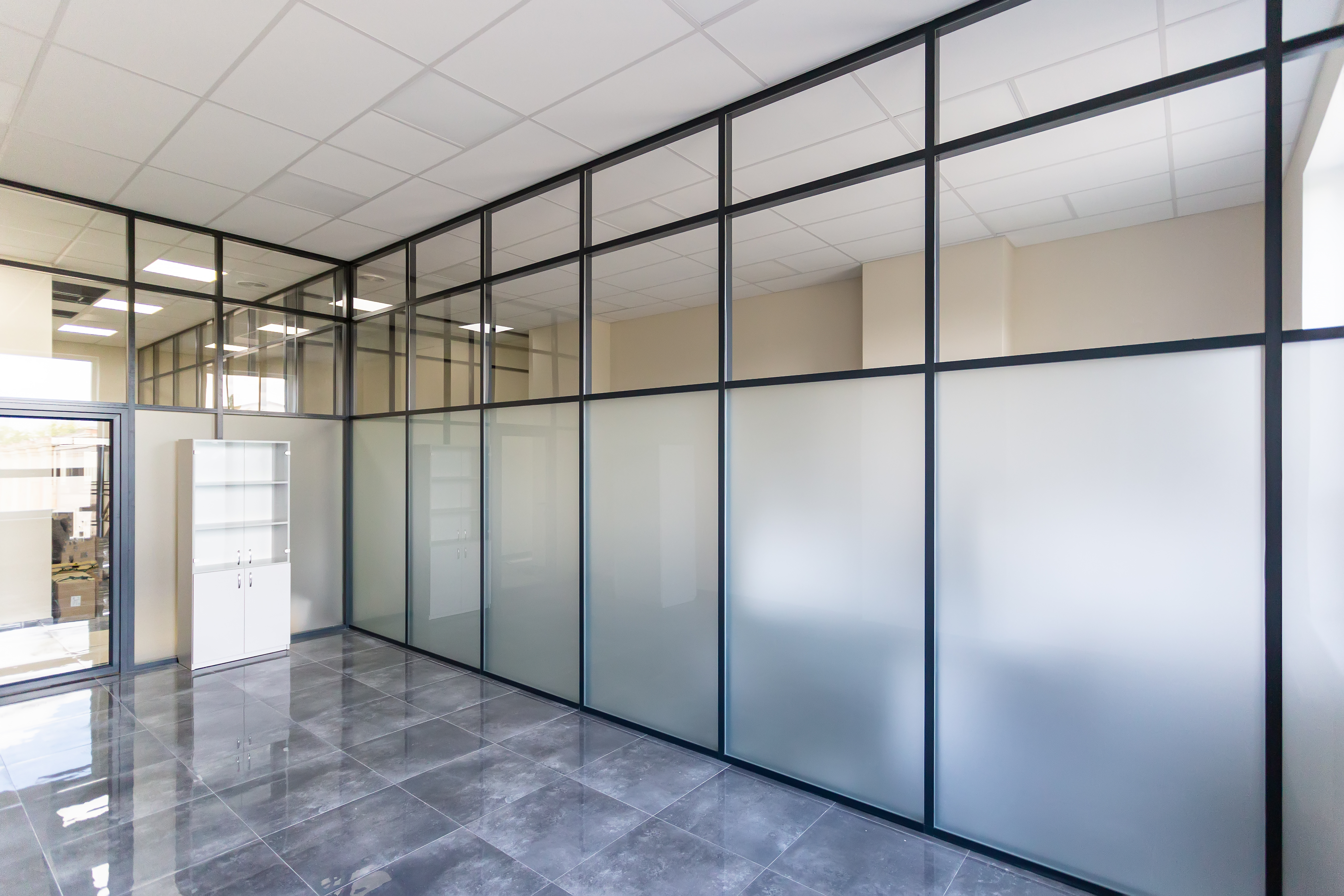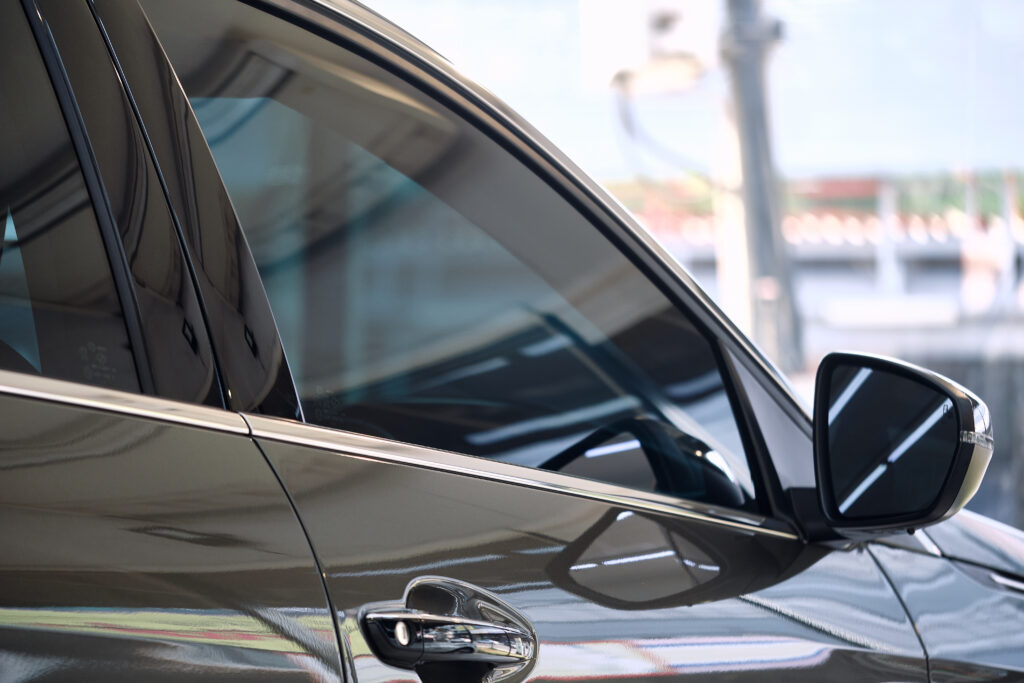Switchable Glass: Is It the Next Big Thing?
Fed up of nosey neighbours looking into your home? Need to have a private meeting at work without your employees seeing confidential information? We have a solution for you!
Get rid of your tinted, blurred, or textured windows. The only thing you need is switchable smart glass, but what is it? This article is your ultimate guide to switchable glass, including use, types, and benefits.
What Is Switchable Glass?
Switchable smart glass uses light and heat exposure or electrical currents to change the colour of your glass, enabling privacy through a tint or blur feature without tint film or textured glass. Essentially, transparent glass becomes translucent.
How Does Switchable Glass Work?
Switchable glass is still a fairly new thing, meaning there’s not a favoured mode or method for how bright or dark the glass is. However, at the push of a button, you can give your clear glass a frosty or tinted complexion instead. Really, how it works depends on the type of glass.
For example, switchable smart glass is formed by several layers, such as electrochromic materials. When a current hits the glass, ions from the electrochromic layer travel to the surface of the glass, leaving a tint. Once you press that button again, the current stops and the ions and glass go back to their original place.
Types of Switchable Glass
In-Plane Switching (IPS)
In this type of glass, the electrochromic material resides between two layers of glass. The ions move horizontally to change the tint.
Out-of-Plane Switching (OPS)
This glass has the same result, but works the opposite way as IPS glass. The electrochromic material is only on one side of the glass, not between the layers. The ions move vertically to change the tint rather than horizontally.
Electrochromic Glass
This glass changes its colour based on an electrical current. You can control this current using an app, remote, or switch, so it’s certainly the most flexible option. When the current is on, the tint appears, and vice versa. With that said, electrochromic glass is the most common and useful type out of the lot.
This glass is composed of several thin layers charged by a huge amount of lithium ions. When the current is turned on, the ions and electrons transfer through the different layers, which darkens the glass. Once turned off, the glass returns to normal and everything goes back to its original place.
Overall, electrochromic glass encompasses the most benefits, including thermal control, privacy, energy efficiency, and general flexibility to be used whenever required. However, this may be the reason it’s the most expensive type of glass.
Photochromic Glass
Photochromic (or photovoltaic) glass is powered using solar power. When exposed to sunlight, molecules from the photochromic layer and electrons from the glass layer combine, causing a tint.
Photovoltaic glass doesn’t have any benefits other than being shielded from the sun. As you can’t control the exposure, it may not be the best type of glass for commercial or industrial builds. Actually, it’s not commonly used for regular windows at all, instead focusing on sunglasses.
Thermochromic Glass
If you are less worried about privacy and just want a cheaper or more environmentally friendly glass option, thermochromic glass is for you. Likely the second most beneficial glass, the colour changes based on the temperature. Cold weather will allow more heat, whereas warm weather will block sun rays.
Essentially, the heat will darken the glass and the cold will lighten it. It’s not recommended for your office or home because it lacks privacy and ideally, you’d prefer it to be warm when the temperature is cold. However, it works best in industrial settings where heat can cause adverse effects because less heat is getting through the glass.
How Much Does Switchable Privacy Glass Cost?
While it depends on the supplier how much switchable privacy glass costs, Checkatrade have created a guide based on the average cost in the UK. However, you should always get a quote from a trusted trader for a specific price.
Switchable privacy glass costs, on average, £650 for 10mm of regular privacy glass, whereas it costs £675 per 12mm of electric privacy glass. The film alone costs anywhere between £350 to £600.
How Long Does Switchable Glass Last?
This depends on the quality, installation, and maintenance of your switchable smart glass. Privacy film is only expected to last 10 years on the exterior. While it can survive up to 20 years on the interior, switchable glass generally lasts from 20 to 30 years.

What Is Switchable Glass Used For?
There are infinite ways switchable smart glass can be used, whether that’s to keep away prying eyes while in the bathroom or simply to block harsh UV rays while on a long journey.
These are just some of the endless possibilities you should consider:
- Artwork
- Office and meeting room
- Reception
- Balcony
- Vehicle (e.g., car, boat, aircraft)
- Bathroom and bedroom (or a house or flat in general)
- Shower screen
- ICU (or a hospital in general)
- Regular door or window
- Retail
- Cafes
- Factories (industrial)
- Skylight
Benefits of Switchable Glass
There are multiple advantages of switchable glass that we’ve already discussed above. But why is it so important and how can it benefit our future?
- Used in multiple settings (e.g., offices, vehicles, art projects)
- Vehicle sunroof
- Increases aesthetics
- Increases privacy
- Increases productivity (reduces procrastination and distractions)
- Reduces light and heat by blocking UV rays
- Cost-effective
- Less need for curtains and blinds
- Cleaner and healthier (less dirt, grime, and dust particles absorbed)
- Self-cleaning
- Low-emissivity
In 2022, the global switchable smart glass market was $5.83 billion (£4.74b), thought to reach $12.76 billion (£10.38b) by 2030. That means almost a 10% increase in CAGR (compound annual growth rate). Low-emissivity glass is already an energy-efficient alternative to normal glass, and with the cost-of-living crisis in the UK, it’s no wonder why switchable glass is becoming a major trend.
Conclusion
Switchable glass is certainly the next big thing in the world of glass. With five different options to choose from and multiple benefits, from a cost-effective alternative to normal windows to saving on your energy bills, we understand why it’s so important! What are your thoughts on this new trend?
Are you in search of a leading supplier who can meet all your requirements as soon as possible? Look no further than Lonsdale Metal. We support customers regardless of the complexity or scale of their needs, and are dedicated to the creation and delivery of bespoke rooflights.
We only use the best glazing and conform to industry standards. If you are considering new glazing, please don’t hesitate to get in touch. Contact us today to learn the benefits or enquire about our services where a member of our experienced and qualified team will promptly get back to you.



